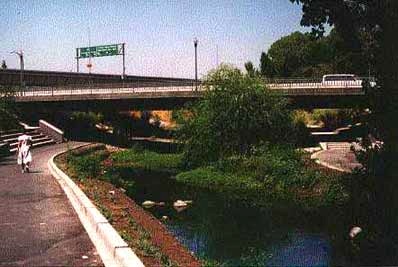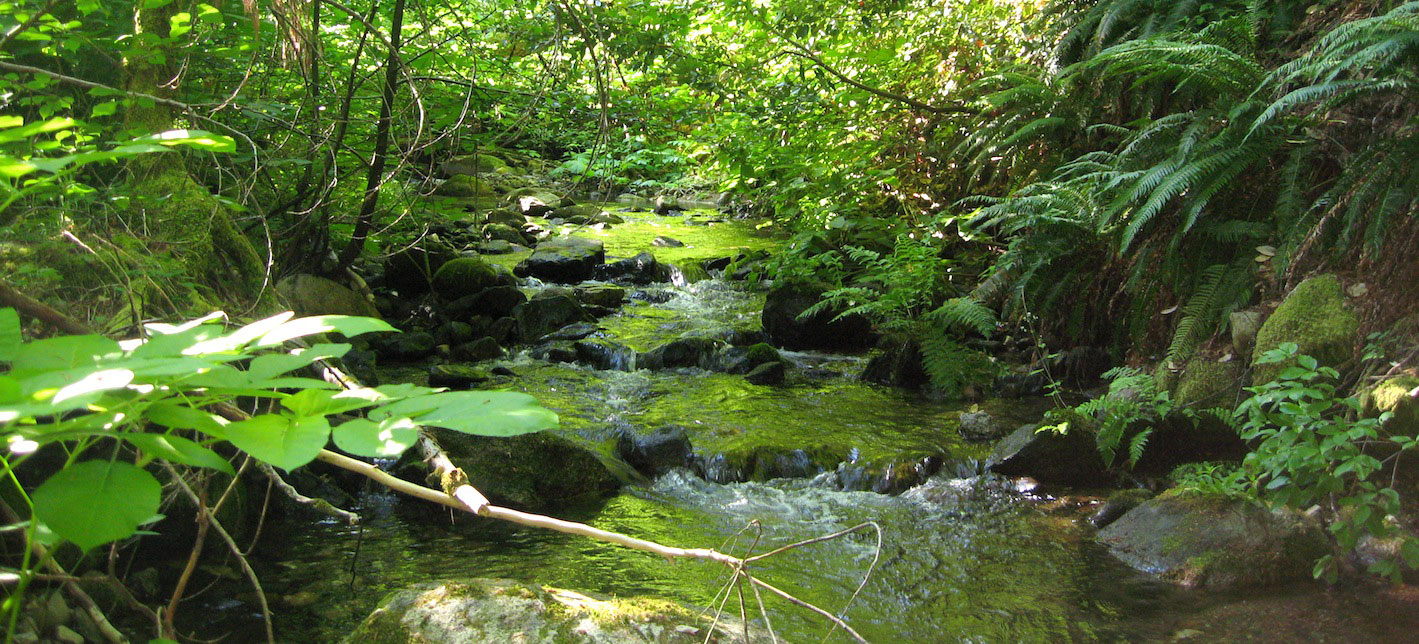Urban Rivers
Participants
Gregory B. Pasternack in collaboration with two groups: (1) Technical Working Group for the Fisheries and Aquatic Habitat Collaborative Effort (FAHCE) in Santa Clara and (2) University of Melbourne Waterways Ecosystem Research Group (WERG)
Background
Urbanization causes a host of changes to natural riverine environments. Mitigation is required to forestall environmental, economic, and social costs, but there are complex institutional and scientific challenges in working in urban rivers. The extent to which hydrologic, geomorphic, and biological actions are needed various between locations, but generally has not been studied very much. Despite the importance of urban rivers as the primary awquatic enviornments many people interact with, it is actually quite difficult to get research funding to study them. As a result, I have had to take advantages of opportunities as they arise.
Project 1: Foundations of Urban River Management
Evaluating "Multipurpose" River Management Designs
Environmentally sensitive river management and river restoration require multi-objective project designs. Unfortunately, "multipurpose" river projects are susceptible to institutional barriers and technical shortcomings that lead to abandonment of some project goals. To understand the root causes of some technical shortcomings in multipurpose river plans I employ a "one tool per goal" criteria from economic theory after checking its applicability to river systems on a qualitative basis. When the "one tool per goal" criteria is coupled with systematic design principles, a "Tools and Goals" (TAG) method that identifies conflicting facets of a project design and qualitatively predicts the outcome of a project can be devised.
Predicting the Outcome of the Guadalupe River Master Plan

Publications
- Pasternack, G. B. 1994. Foundations of urban river management. Master's project. University of California, Berkeley, 75 pp, 3 appendices. DOI: 10.13140/RG.2.2.26700.00641.
Project 2: Urban River Ecohydraulics
In collaboration with the Waterways Ecosystem Research Grou (WERG) at University of Melbourne- Burnley, we investigated typical natural and urbanized streams in eastern Melbourne, VIC Australia. We studied these channels under different hydrological regimes to understand the effects of different runoff management strategies as wlel as different channel rehabilitation strategies. Each scenario was vetted against three ecologically relevant hydraulic characteristics: bed mobilization, retentive habitat, and floodplain inundation, using hydraulic metrics bed shear stress, shallow slow‐water habitat (SSWH) area, and floodplain inundation area. The findings are reported in four published journal articles.
Publications
- Anim, D., Fletcher, T., Vietz, G., Pasternack, G. B., Burns, M. 2018. Effect of urbanization on stream hydraulics. River Research and Applications. 0.1002/rra.3293.
- Anim, D., Fletcher, T., Vietz, G., Pasternack, G. B., Burns, M. 2018. Restoring in-stream habitat in urban catchments: Modify flow or the channel? Ecohydrology. DOI: 10.1002/eco.2050.
- Anim, D., Fletcher, T., Pasternack, G. B., Vietz, G., Duncan, H. P., Burns, M. 2019. Can catchment-scale urban stormwater management measures benefit the stream hydraulic environment? Journal of Environmental Management 233: 1-11. DOI: 10.1016/j.jenvman.2018.12.023.
- Anim, D., Fletcher, T., Vietz, G., Burns, M., Pasternack, G. B. revised-submitted. How alternative urban stream channel designs influence ecohydraulic conditions. Journal of Environmental Management.
Project 3: Managing Silicon Valley's Urban Creeks
Twenty years after having done an MS thesis on urban river management using the Guadalupe River in San Jose, California, USA as a case study, I was invited to participate in a Technical Working Group tasked with figuring out how to manage flow and non-flow activities in Santa Clara Valley (aka "Silicon Valley") to promote recovery of Chinook salmon and Steelhead Trout. This work was part of a legal settlement agreement known as the Fisheries and Aquatic Habitat Collaborative Effort (FAHCE).


